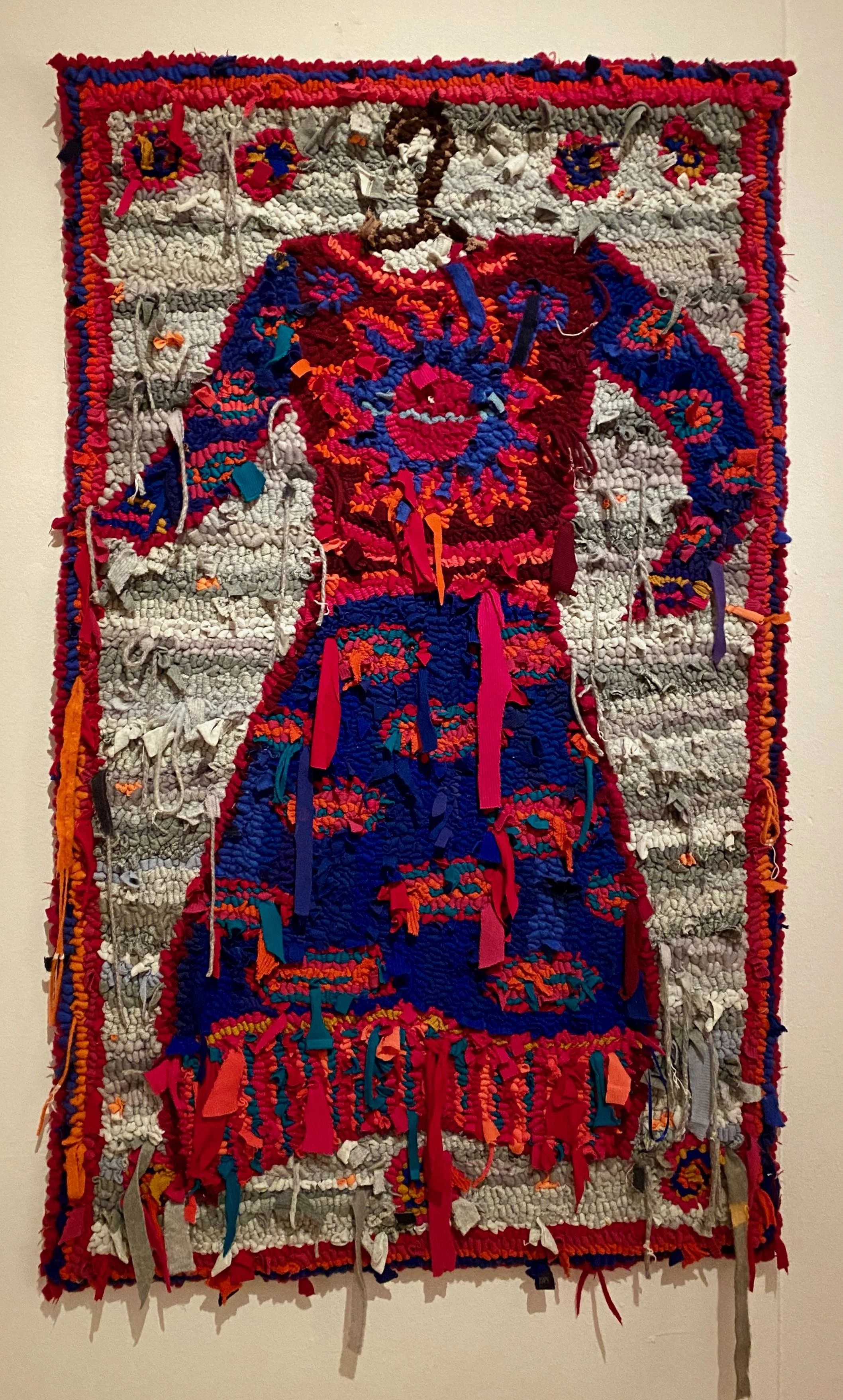Winifred Nicholson: Cumbrian Rag Rugs at Tullie
This was a beautiful, if slightly unusual exhibition. With Winifred Nicholson’s name headlining the show, you might expect a solo exhibition focused solely on her work. Instead, Cumbrian Rag Rugs is very much a group show.
The exhibition presents rag rugs designed by Winifred Nicholson (1893–1981), alongside pieces made by her family, local women in Cumbria, and later contemporary artists. Known primarily for her luminous paintings of flowers, light, and landscapes, Nicholson also had a long-standing interest in the tradition of rag rugging — a domestic craft often practised in rural communities using scraps of fabric worked through hessian backing.
Nicholson worked collaboratively with women in her local Cumbrian community to produce these rugs, combining her own designs with their making skills. The exhibition reveals this lesser-known aspect of her creative life and celebrates the spirit of friendship, collaboration, and domestic creativity that surrounded it.




A large amount of the show is dedicated to Nicholson’s paintings, shown alongside rag rugs, sketches, and archival material. Her paintings are full of life and expression; simple domestic moments are transformed through her attention to light, colour, and form. In Easter Monday, for example, you can almost feel the warmth of sunlight flooding through the window and smell the flowers arranged in the jug. It’s a quiet mastery of observation and presence.
The core of the exhibition, however, is the rag rugs themselves — tactile, joyful, and rich in texture. Some were designed by Nicholson and produced by local makers; others were entirely the work of her friends and family, including her grandchildren (some as young as six) and artists like Lu Mason.
Two Cats by a Fire, Mary Bewick, 1970, Rag Rug
This was an immediate favourite. The detail is wonderful, from the suggestion of flames rising from the fire to the expressive faces of the cats, full of personality. Even rendered in textile, the precision and character are remarkable. Mary Bewick was a key figure in reviving rag rug making in Cumbria during the 1960s, often working from her observations of animals and rural life. Her rugs are finely made, with dense, small loops of fabric that create rich textures and clear forms.
Dancing Panther Cub, Designed by Winifred Nicholson, made by Florence Williams, c.1966, Rag Rug
Pure joy. A leaping panther cub, full of energy, framed by a lively border of flowers and birds. This design originated from a newspaper clipping of a textile fragment Nicholson had spotted, annotated with detailed colour instructions: the panther in yellow and black, a deep golden-green background, and a border bursting with every bright colour available. The result is playful and vibrant — a joyful celebration of pattern, movement, and colour.
The exhibition also features contemporary rag rugs, showing how this craft continues to evolve today.
Lose Your Rag, Rachel Matthews, 2022
Matthews, who runs the Rag School at East London Textile Arts, continues to pass on these traditional skills, framing rag rug making as both a craft and a creative, expressive art form. Her Rag Manifesto reflects this ethos, an artist’s call to embrace the slow, joyful practice of making with scraps.
Rag Trade, Lu Mason, 2022
Mason’s work brings the tradition into contemporary art spaces. Her rag rug Magician was the first to be exhibited at the Royal Academy Summer Exhibition in 2021. Rag Trade continues this spirit, blending traditional technique with bold, modern design.
This was an absorbing and joyful exhibition, though not without its oddities. The decision to remove wall labels (usually fundamental to navigating an exhibition) in favour of a printed booklet felt cumbersome. The inclusion of paintings by Nicholson was a delight, but their connection to the rugs was loosely framed. A film about Nicholson’s painting practice, originally made for another exhibition, was interesting but showed works not actually on display.
Still, the strength of the show lies in its exploration of creativity as something domestic, collaborative, and intergenerational. It celebrates the blurred lines between art and craft, the professional and the amateur, and the human desire to make beautiful things from what’s at hand.

